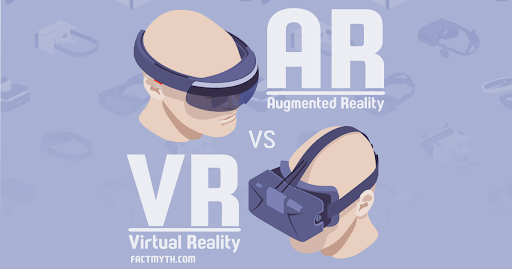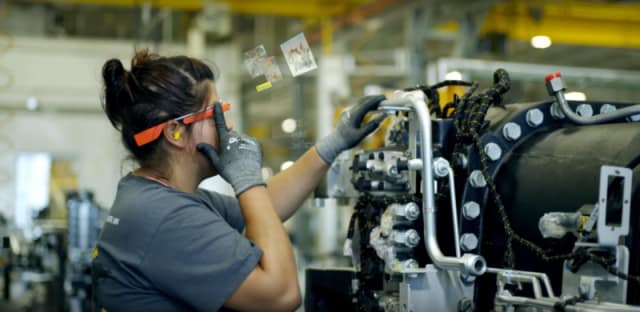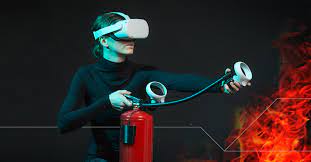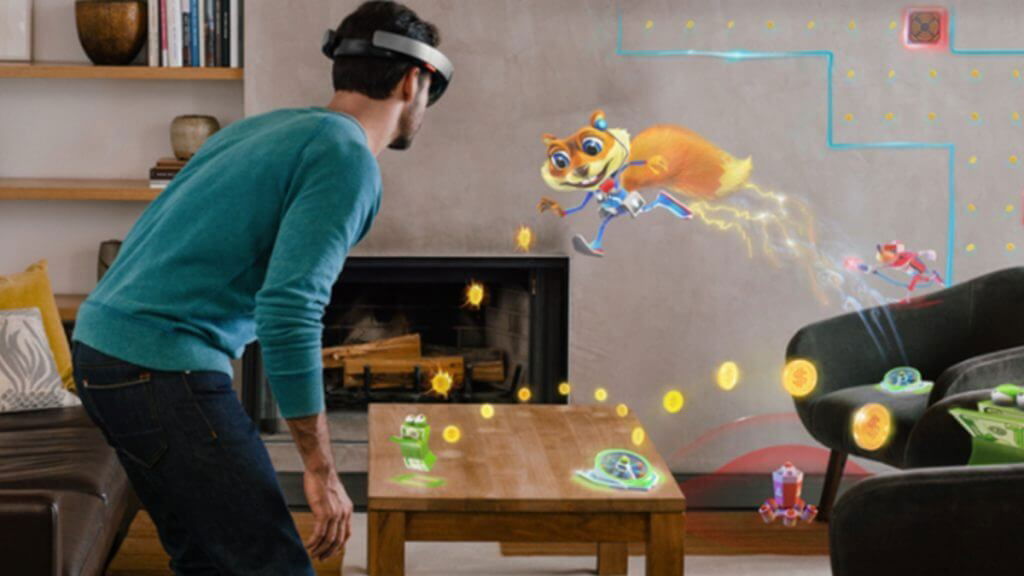
While virtual reality (VR)/ augmented reality (AR) have been around for some time, it wasn't until 2013 when Facebook gained Oculus VR that VR/AR garnered an enormous amount of attention.
As of March 2013, the market valuation of the product purchased by Facebook was estimated to be $2 billion USD. Even after purchasing a product for $15,000 that they didn't expect to be read, the business world heard and understood that the foundation for mainstream VR was being laid. Mark Zuckerberg, CEO of Facebook, shared his thoughts on the acquisition of Oculus VR: “When I put on the Goggles, it's unlike anything I've ever experienced in my life.” His claims turned out to be correct: the new technology was truly amazing.
In a nutshell, virtual reality (VR) and augmented reality (AR) are simulated environments developed by computer software. Immersive is what it does; you take out of your reality. It offers a sensory experience including sight, sound, and sometimes touch that simulates the environment that the technology presents. Watch videos of people who are using VR, and you see that their movements show that they have been "transported" to the virtual world the technology is showing them.
Many believe that virtual reality, which has been around since the 1950s, was initially developed for military, but it wasn't until much later, starting in the early 1980s, that it became mainstream due, in large part, to the video game industry. The potential for virtual reality technology has been reinvented thanks to recent advancements in technology, particularly the last half decade. Over the past few years, virtual reality (VR) has gained popularity across various industries, ones that have nothing to do with video games.
Focusing on Facebook's $2 billion USD purchase of virtual reality (VR) technology. Technology that was not even close to being ready for prime time. Facebook founder Mark Zuckerberg explained that purchasing Oculus VR as a long-term investment was a choice made because they wanted to take part in the future of technology. Recent statistics about the future of VR paint a positive picture, leading Facebook CEO Mark Zuckerberg to purchase the technology. They estimated the VR market to be worth around $70 billion, according to Trend Force, a market research firm. Zuckerberg is in line to earn an extremely generous profit if those estimates are correct. Indeed, a wise business and financial decision on his part.
Since new technology, especially virtual reality, is advancing at a speeding up rate, as well as the expected value of virtual reality, it's safe to assume that the technology offers a wealth of opportunities for business owners. It is correct to say that virtual reality can enhance almost all the activities that consumers engage in. Let's imagine, for example, how virtual reality can improve things like shopping, academics, travel, and fitness and healthcare. As creatives entrepreneurs, what does that mean for us?–It can be taken to mean that the options are limitless, as there are innumerable uses for VR.
The fact that Facebook was selling the Oculus Rift VR headset long before the technology was ready to be distributed shows that the technology is still in its experimental stages. The headset is compatible with many gaming systems, including Xbox One, Unity, and Unreal Engine, as well as popular game development tools. This means that people can use the headset to make applications that are not necessarily related to gaming. Prior to the pre-sale of the product, the product could make a major impact, and it now turns out that Oculus VR headsets have revolutionized the industry. Facebook has developed various iterations of the technology, such as the Oculus Quest.
- Virtual Reality helps you become smarter
- The future of finding love is virtual reality.
- Augmented reality & Virtual casino
- All The Biggest VR Game Releases In 2021
Not only Facebook but also Google has shown interest in virtual reality. One of the biggest technology companies began experimenting with virtual reality (VR) technology with its Google Cardboard head-mounted display (HMD) in 2013. The firm has developed a virtual reality headset that competes with Facebook-owned Oculus. One additional factor is that Magic Leap has invested an enormous amount of money from investors that have invested a significant amount of money into it, which confirms the monumental opportunities that the technology offers for entrepreneurs.
While Facebook and Google are certainly among the major players investing in virtual reality, others have also jumped on the bandwagon. Oculus, a prominent tech company, has teamed up with Samsung, and together they developed the Gear VR headset, which works with Samsung devices. PlayStation VR, a virtual reality headset for the PS4 gaming system, is now on the market, too. HoloLens is Microsoft's AR headset and the first "fully untethered, holographic computer." With Microsoft's AR technology, both existing companies and startups that are interested in getting involved in the incredible potential that virtual reality offers can create their own one-of-a-kind applications.
Virtual and augmented reality technology has seen tremendous growth in several sectors.
While virtual reality and augmented reality can be used in a variety of different sectors, these technologies are thriving in four critical areas. The fields of these sectors include:
A. virtual and augmented reality in manufacturing

Manufacturers are getting a tremendous benefit from the benefits of VR/AR. To illustrate, it is noted that the American-based automaker Ford uses VR/AR to improve their designs. In the past, to increase the functionality of a car, the corporation would have to design physical samples of the car first and test the designs. Because of this new technology, Ford now can modify virtual models of their vehicles to produce real-time adjustments, and "try out" the changes prior to manufacturing before any physical modifications are made. A major positive impact has been created by the ability to build virtual prototypes. Designers and manufacturers can now develop virtual examples and make any necessary adjustments, instead of investing exorbitant amounts of money and countless hours creating physical prototypes.
B. Immersive virtual and augmented reality is widely being used in training and education.

Letting students learn how to drive before operating real vehicles and transporting them to locations where they can interact with real settings and models (like the Pyramids of Giza or the Amazon Rainforest) gives them the opportunity to interact with real-life environments and models they may not be able to encounter in person. Virtual reality has already had a significant impact on the training and education sectors. An example of this is Google's initiative known as Pioneer Expeditions, which has had participants visit over 100 different locations, including the Great Wall of China, coral reefs, and even Mars. The technology brings to life knowledge previously inaccessible to students, giving them the opportunity to experience the "hands-on" information they may not otherwise have access to.
C. Virtual Reality (VR) and Augmented Reality (AR) in healthcare

The healthcare market has been profoundly affected by virtual reality as well. While the technology is still fairly new, medical practitioners and researchers use it to produce life-size 3D models of human anatomy from CT scans, ultrasound, and other forms of diagnostic imaging. 3D models are also used by surgeons, for example, to draft and draft and rehearse medical procedures, making it possible for patients to benefit. Augmented reality/virtual reality is also being used to treat Alzheimer's and dementia patients, and it's even used to help people who have had a stroke and other traumatic brain injuries regain physical and mental functions.
D. Virtual Reality (VR) and Augmented Reality (AR) in Gaming

To sum it all up, virtual reality and augmented reality have had a substantial impact on the gaming industry. Since VR had such a tremendous impact on gaming when it was still in its early stages, it's no surprise that the technology has made a massive impact on the gaming industry. Virtual reality (VR) technology was first introduced in the gaming industry in the early 1980s. In those days, the technology was poor; the devices were bulky, awkward to use, and did not effectively immerse the user. Fast-forward to the present day, and that is very different. This 21st-century virtual reality technology is lightweight, easy to use, and widely accessible. Previously, companies were simply trying to improve their existing platforms; however, now they are providing completely new experiences. VR technology has dramatically improved the simulation aspects of video games, allowing gamers to sit in the cockpits of fighter jets and be a part of Star Trek's Bridge Crew.
As new technologies continue to emerge, it will interest to see how previous industries that use these technologies will change, and what new industries will implement VR. Immersive technology has endless opportunities for businesses.
Virtual Reality, Augmented and Artificial Intelligence 2021 specialist Amit Caesar wrote the article.
Invite Friends & You Both Get Up To US$100
Introduce your friends to the easiest way to get things done
How to make Up To US$100 in less than a minute on fiverr?
- Oculus Quest 2 accessories
- VR products from Aliexpress
- Amazing products for your virtual reality glasses from Ebay
- Best VR\AR suits for purchase
- Squid Games are now playing in virtual reality
- How Project Yemen used VR to provide vital surgical training
- Vive Flow is a Consumer VR Standalone with a Strong Focus on Hand-tracking, according to a new report.
- For 2021, the Best Virtual reality Headsets
- 10 Accessories to Improve Your Flight Simulator in VR
- Books you must read about virtual reality
- Fresenius launches VR-based training for home dialysis patients
- Apple supplier launches non-invasive glucose monitor & health sensor tech
- VR aid the improvement of balance in the elderly.
- Microsoft is working on HoloLens 3, the consumer version
- How to use virtual reality glasses for dental care?
- VR technologies for restoration, movement capabilities, and function
- Virtual Reality Applications in Medicine
- Benefits of Virtual Reality for Stroke Recovery?
- Accenture acquires 60,000 Oculus Quest 2 headsets for training
- Treatment of sleep disorders by virtual reality
- Caring for Autistic Children by Virtual Reality
- VR therapy helps to deal with pain
Subscribe now to our YouTube channel
Subscribe now to our Facebook Page
Subscribe now to our twitter page
Love the realm of virtual reality and augmented reality? Are you over 18? Want to make money right now from your PC or smartphone from virtual and augmented reality? Sign up and you will receive an offer from us you can not refuse.



